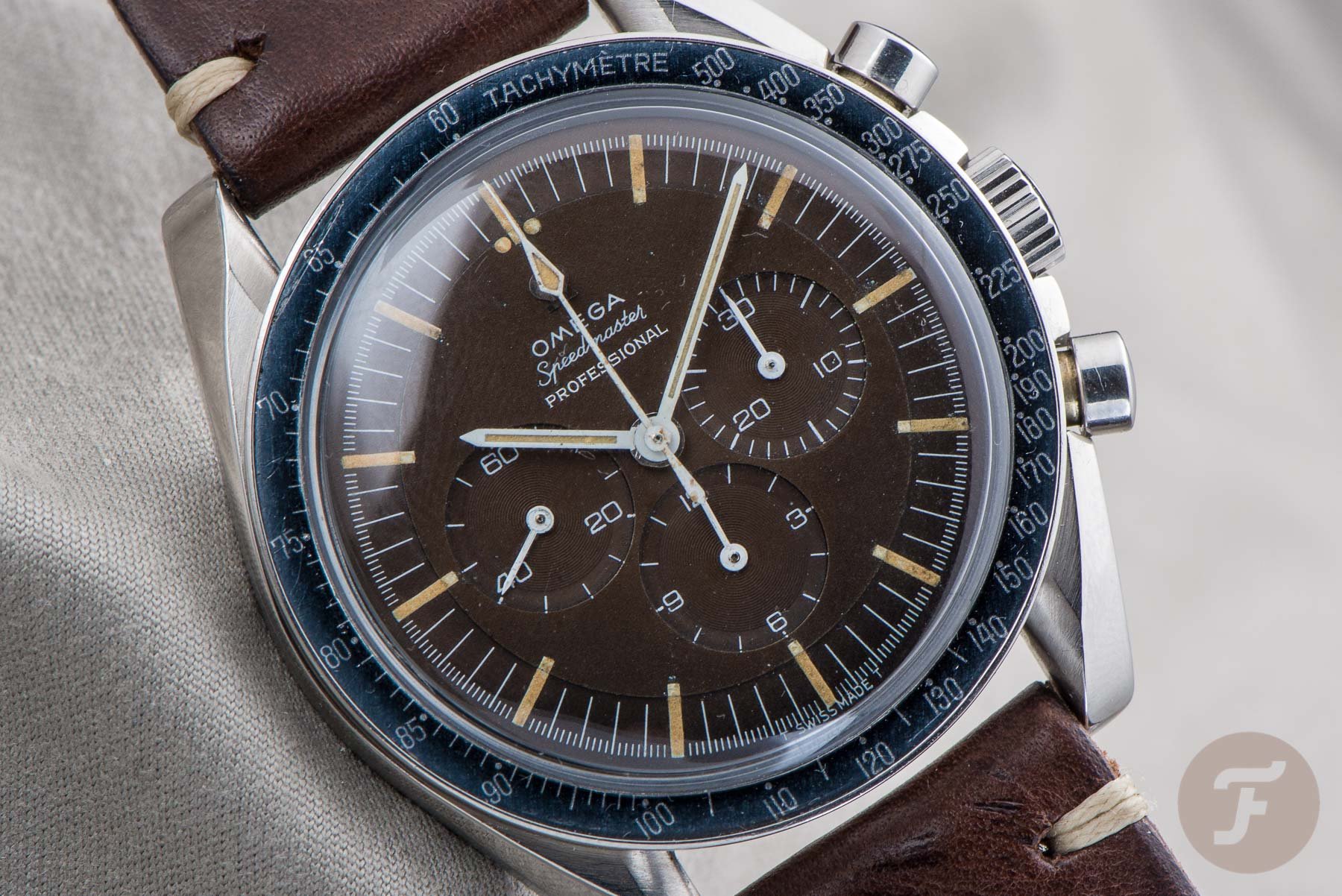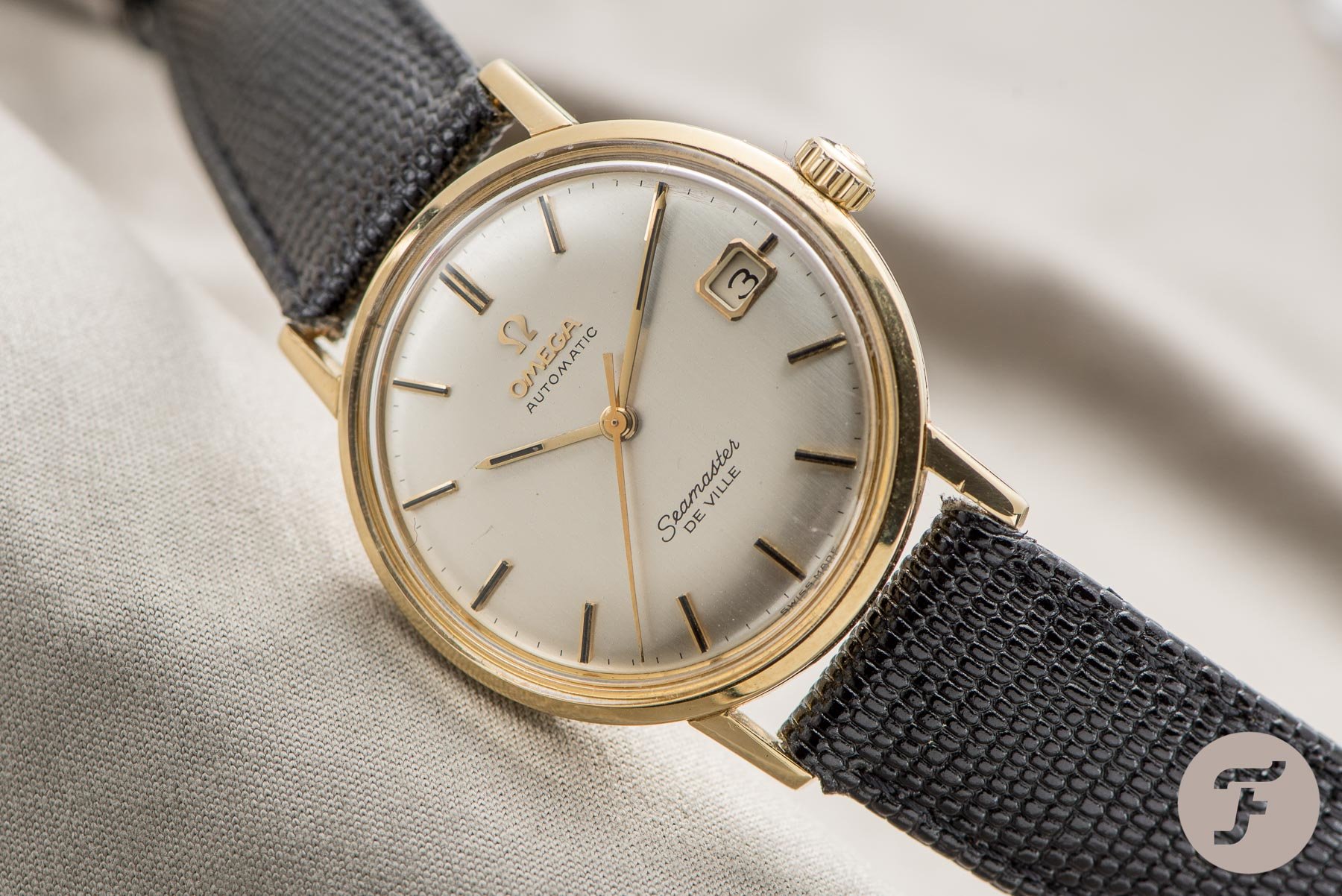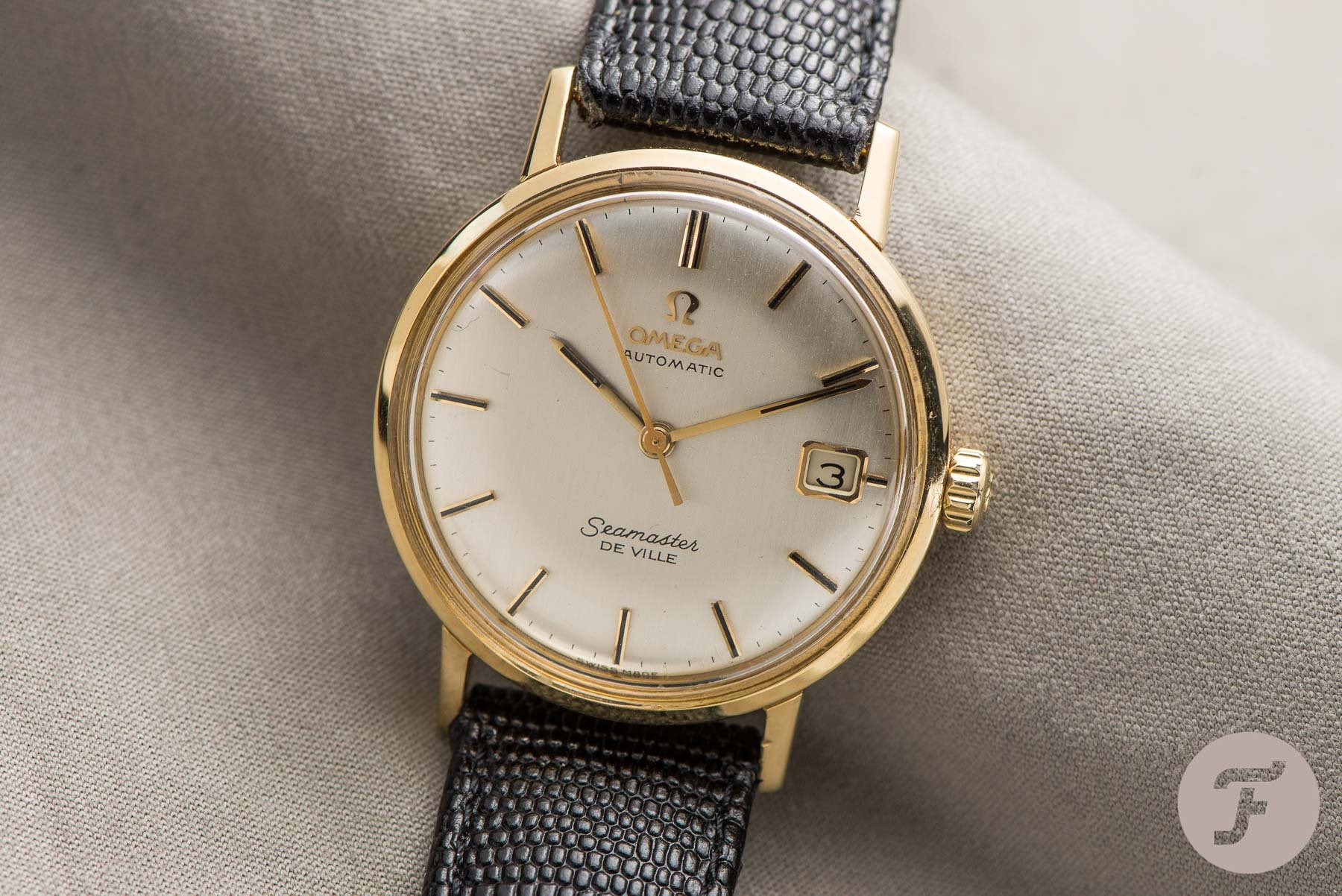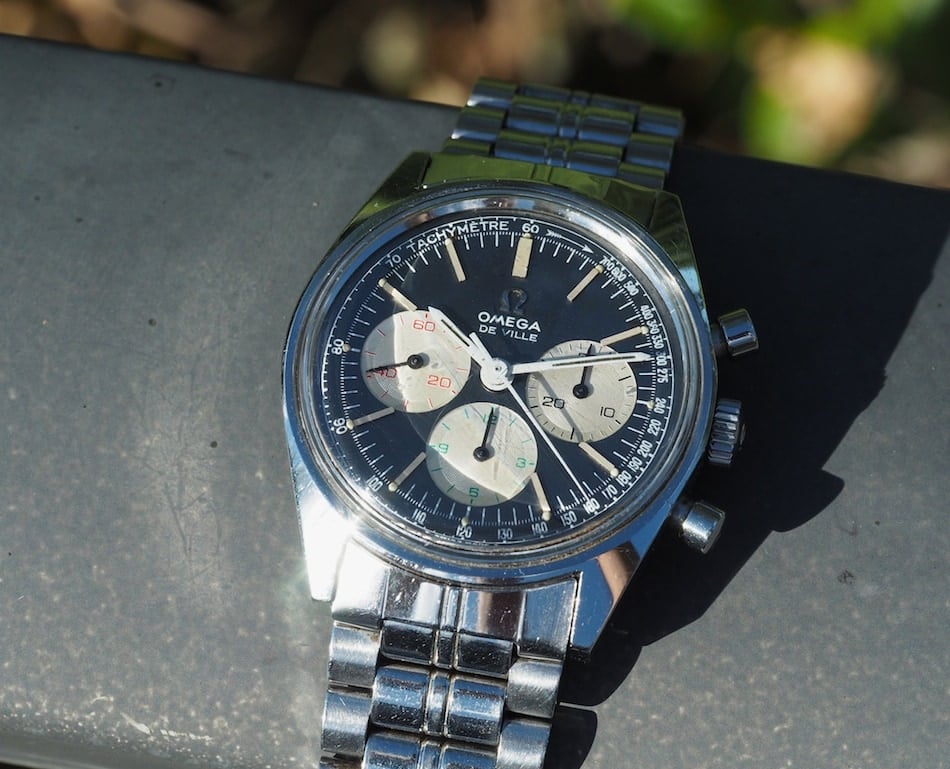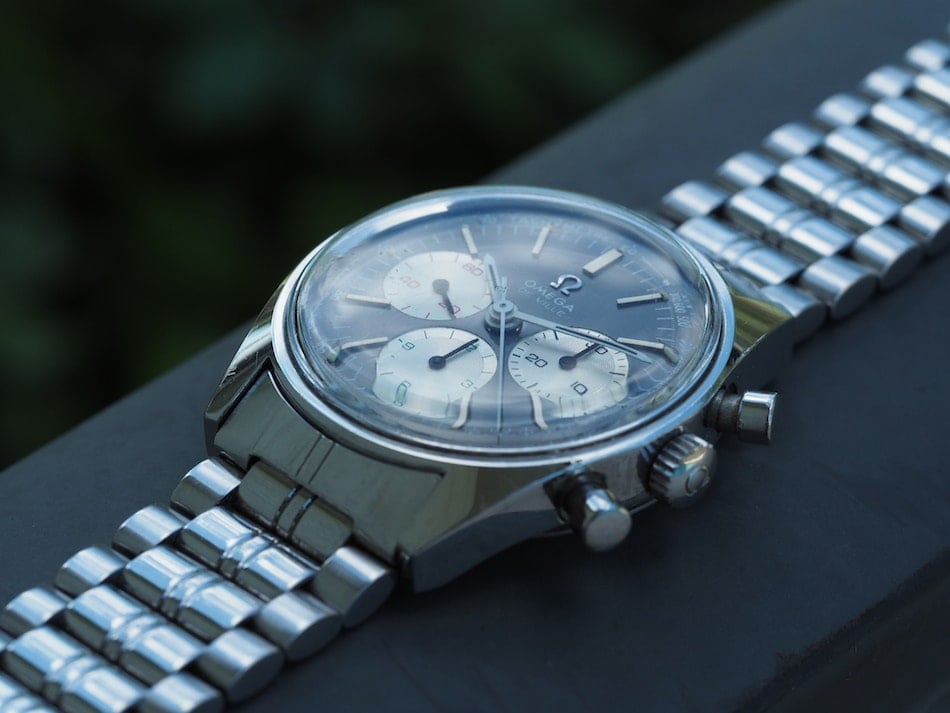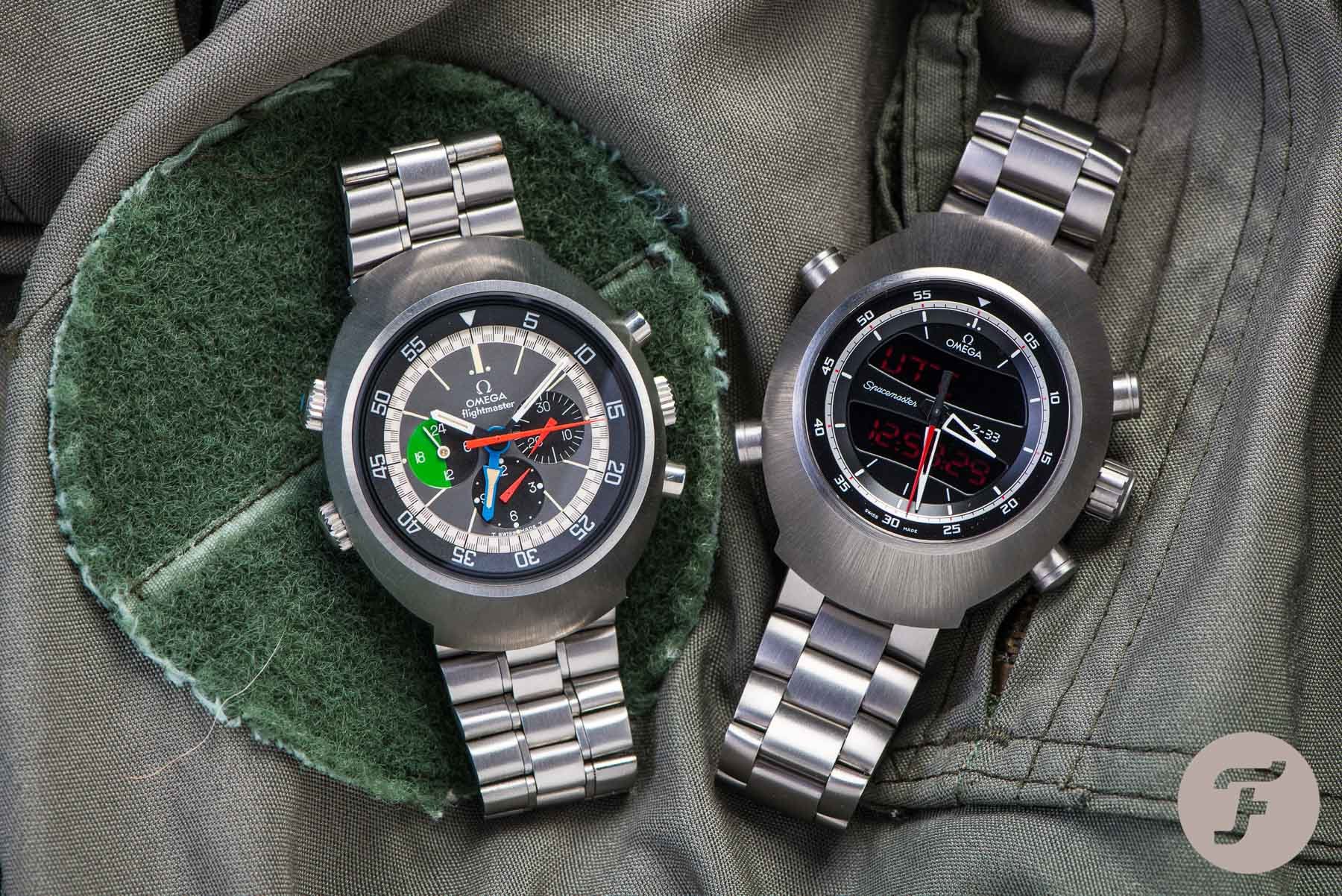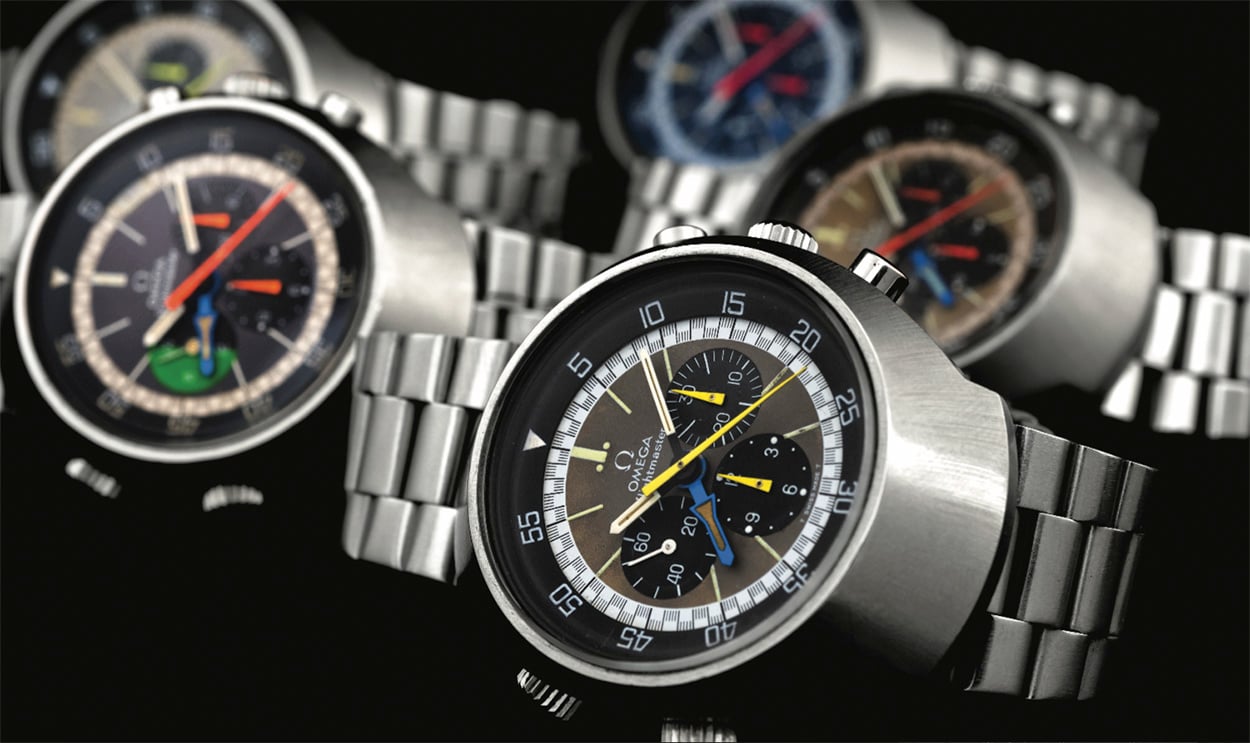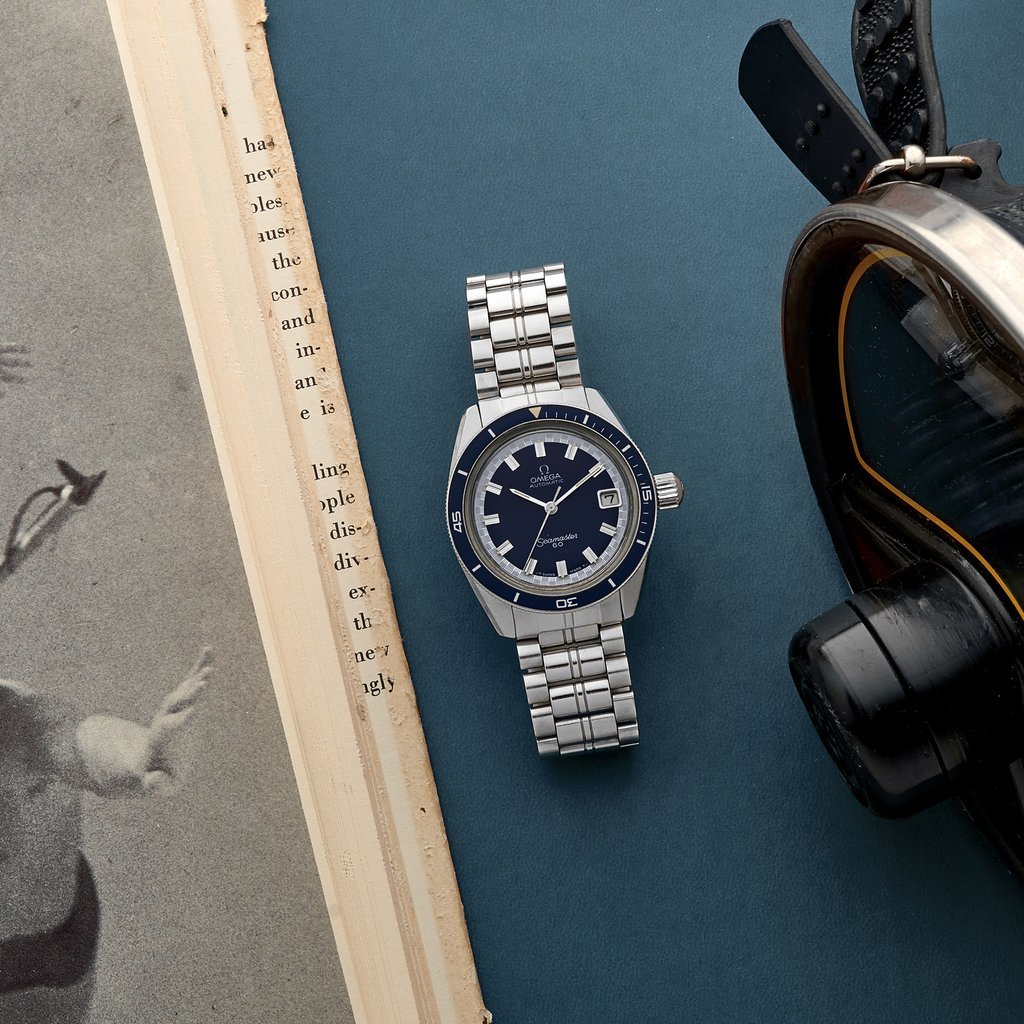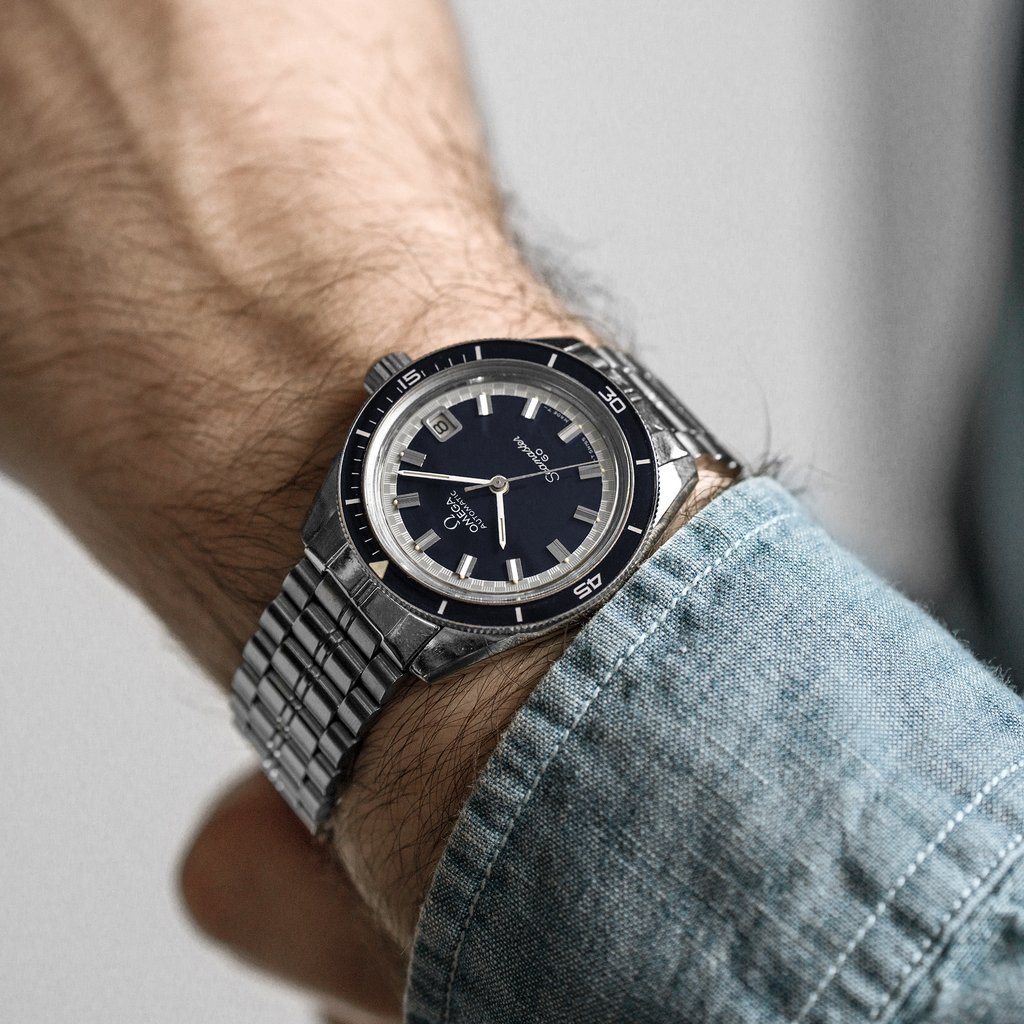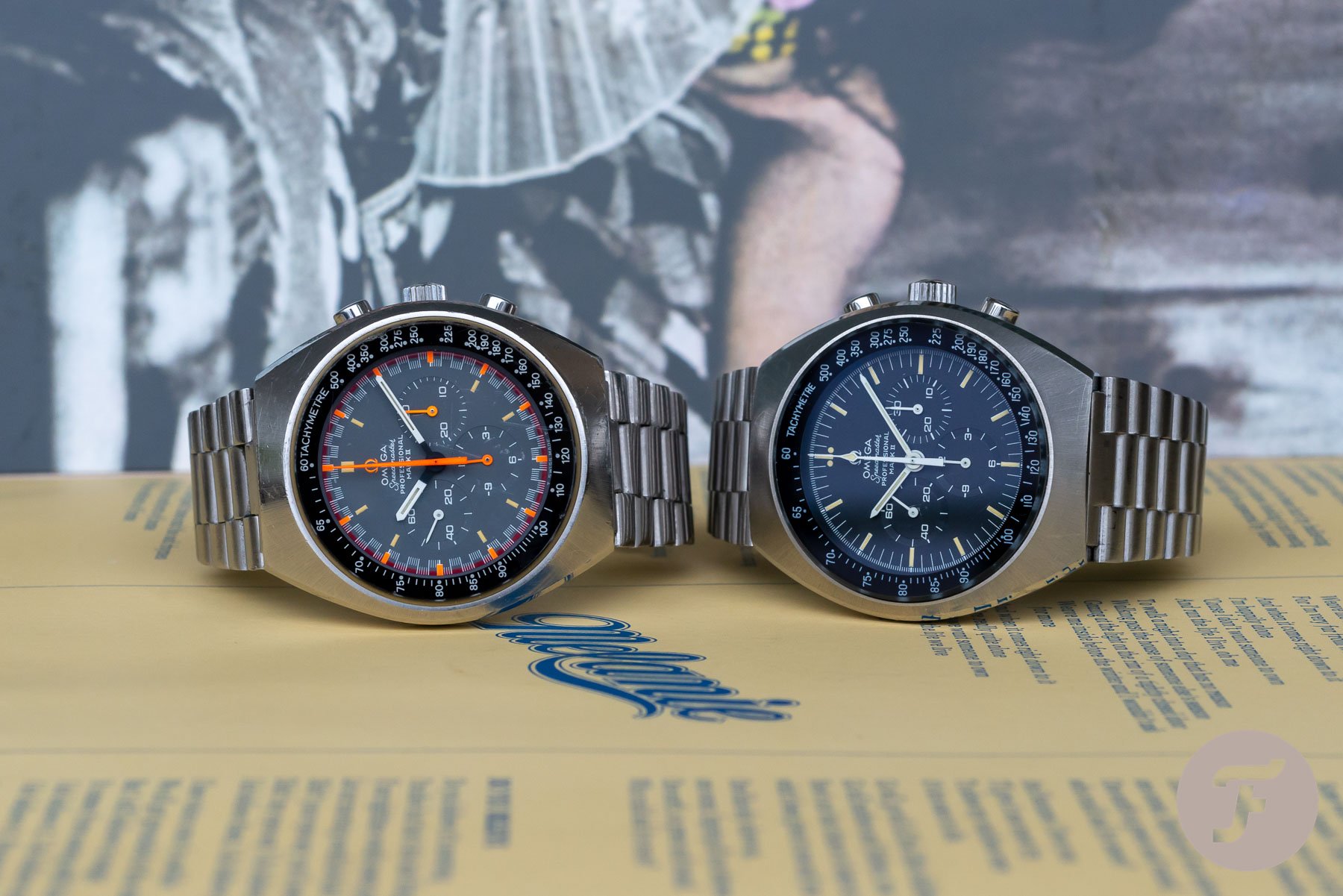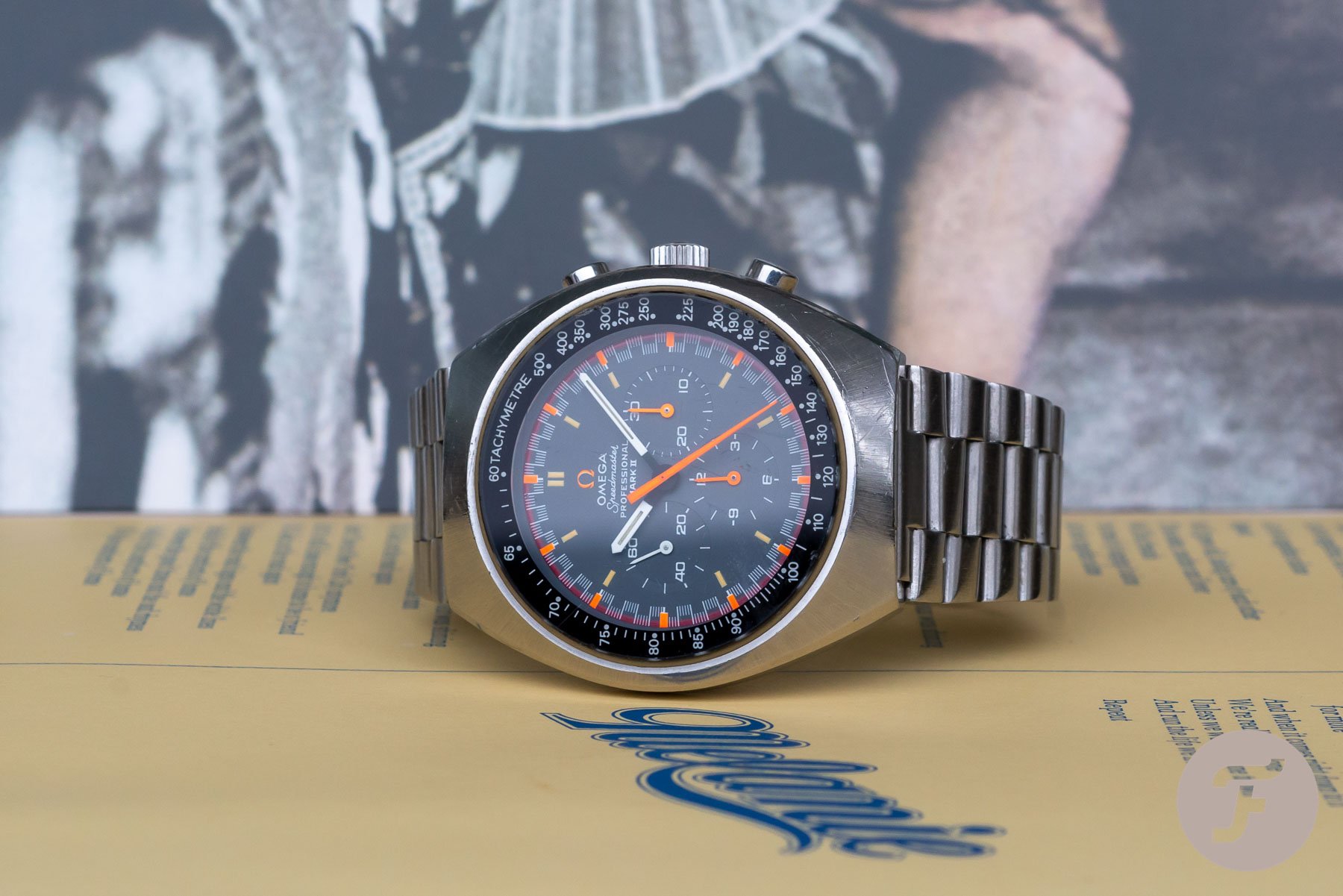Buying Guide: The Best Omega Watches From The 1960s
We like to talk about vintage watches a lot within the Fratello team. While the daily routine is largely focused on the most recent developments in the world of watches, the most fun for many of us lies in the world of vintage watches. It’s a world full of history, remarkable watches, incredible stories, and quirky details. It inspired us to come up with a series of articles focusing on the best watches per decade from a select group of brands. Some of them priceless, some of them still affordable. But all of them are interesting watches. In this installment, we will take a look at the best Omega watches from the 1960s.
In the 1960s, we witnessed developments that challenged the status quo of watch design forever. While the 1950s introduced the sports watches next to the dressier timepieces people were used to, the 1960s took that trope to the extreme. The sheer amount of watches that pushed the visual boundaries of what was known and accepted was enormous. On top of that, we also saw great technical developments with the race to produce the first automatic chronograph as the most significant of the decade.
Omega in the 1960s
This combination of design and technology is also why the 1960s saw so many iconic releases that have become the perfect vintage collector’s pieces. Sometimes you might be able to find a bargain, and sometimes you have to pay a significant amount of money to buy a classic. When it comes to Omega, you will see both options. Are you looking for a classic Speedmaster from the 1960s? Chances are you will have to pay quite a bit of money. But Omega produced a great number of watches in the 1960s that are still affordable and can be a great vintage addition to your collection.
The 1960s for Omega represent a decade of great change in design. The Omega watches from the 1950s were defined by a classic and refined style of design. The 1960s saw Omega introduce some pretty extravagant designs. But dive into the world of Omega, and you will soon find out that the brand was a great mix of the smaller-sized refined watches we have seen from the brand in the 1950s and the bigger, bolder designs that were new for the brand. And picking five models from the 1960s is tough. There is simply way too much to choose from.
And when it comes to the big Speedmaster dilemma, I deliberately stayed away from making this a Speedmaster list. We have our Speedy Tuesday articles to help you out on that. I am not saying you won’t find a Speedmaster, though. But the goal has always been to create a mix of some of the best models from Omega in the 1960s. So without further ado, let’s get going.
The entry-point — Omega Seamaster De Ville
The Omega Seamaster De Ville was a no-brainer for me when it comes to the best Omega watches from the 1960s. The Seamaster De Ville is specific to the 1960s as it was produced from 1963 until 1967. Secondly, the Seamaster De Ville is a great example of a sixties Omega characterized by the elegant and refined style we know of the Omega watches from the 1950s. Thirdly, this is still very much an affordable vintage watch. But for me, above all, this is the watch that my father bought in 1966, and I saw on his wrist for most of my youth. It’s the watch that essentially connects me to my father and our shared fascination for watches and Omega in particular.
The Seamaster De Ville was first introduced in 1963. Omega had introduced the De Ville line in 1960 that descended from the Seamaster line. It combined the monocoque case design from the Seamaster with the slim profile and refined aesthetics of a classic dress watch. This combination of greater water resistance and elegant looks turned out the be a great success. But it was Norman Morris, Omega’s general agent in the US, that requested to actually put both the Seamaster and the De Ville name on the dial. Up until then, it only mentioned Seamaster on the dial. Morris really liked the combination of the Seamaster’s functionality and the elegance of the De Ville design. And by combining the words, it would simply tell the story at a glance.
Finding your favorite
Over the course of four years, Omega released a great number of Seamaster De Ville models. You could choose from either an automatic or a hand-wound movement. And both were available with or without a date indication at 3 o’clock. On top of that, the Seamaster De Ville came with either a stainless steel, gold-plated, or 18-karat red or yellow gold case. And lastly, there was a variation of different dial colors available. The most common dial you will find is, however, the silvered dial you see pictured here.
It is also the dial color my father chose when he bought his Seamaster De Ville. He chose the hand-wound model in steel with a date indication with case reference ref 136.020 powered by Omega caliber 610. My dad chose the hand-wound model as it was thinner and therefore easier to wear. Something that made sense at the time, but nowadays, with a case size of 34.5mm, the automatic version is considered small and wears very easily. Omega used different movements for the Seamaster De Ville, starting with the 500-series and later replaced by the 600-series and 700-series.
The best thing about the Seamaster De Ville models is that you can buy them for 500–1000 Euros. Prices have slowly gone up, but they are still easy to get and very affordable. The gold models and steel models in pristine condition, however, do go for well over 1k. Make sure that you do some research into the different models, movements, and reference numbers. You will soon find out that it’s not only good for telling the watches apart and checking the authenticity, it’s also a ton of fun. And it’s what makes the Seamaster De Ville the perfect entry-level Omega from the 1960s.
My Choice — Omega De Ville Chronograph ref. 145.018
Picking an Omega chronograph from the 1960s beside the Speedmaster is not a simple task. There are simply too many to mention in a list like this is. So you will have to forgive me if I leave your favorite one out. As this is my pick, I will say that the Omega De Ville Chronograph (ref. 145.018) is by far my favorite out of all of the non-Speedmaster chronographs that Omega produced in the 1960s. After Omega decided to make the De Ville collection a separate collection in 1967, it quickly became very popular. With the De Ville collection, Omega was able to respond to the latest trends rather quickly. Something that happened a lot in the 1960s, of course.
But the main thing that sparked the release of this specific De Ville Chronograph series in 1968 was the release of the Omega Calibers 860 and 861. Reference 145.107 uses Caliber 860 with two sub-dials and ref. 145.018 — my preferred version — has three sub-dials. Caliber 861 is the improved version of the legendary Caliber 321. Omega used Caliber 861 for the Speedmaster, De Ville, and Seamaster chronographs. One of the famous Seamaster chronographs from the late 1960s is the Seamaster “Soccer” chronograph from 1969 that also uses Caliber 861.
And a fun fact is that this De Ville Chronograph also started as part of the Seamaster collection. There are versions with just Seamaster on the dial, and some combine the Seamaster and De Ville wording. In late 1968 however, Omega made it part of the De Ville collection. And as such, it combines a legendary great movement with stunning looks that make this watch my favorite on this list.
A tough find
What I love about the De Ville Chronograph the most are its elegant looks. It is a late 60s chronograph that takes a step away from the classical looks of fifties style chronographs without becoming a true sports chronograph. It’s also why I love the Rolex “Pre-Daytona” ref. 6238 so much that I featured it as my pick last week. The De Ville Chronograph has a modest 35mm case size, but as Mike explained in his review of the watch, it actually wears bigger. And, in my opinion, it looks the best on the original stainless steel bracelet that it came on. Sure, it looks good on a leather strap, but the sporty looks of the watch on the bracelet are hard to beat. Combine it with the legendary Caliber 861, and this is simply a winner.
Omega produced the De Ville Chronograph ref. 145.018 from 1968 to 1970. So it’s not a watch that you will find easily. And because of its short production run and handsome looks, the watch is hot property among Omega collectors. That’s especially true of the version you see in the picture with the black dial and colorful sub-dials. It is a real rarity. Omega produced quite a few different dials with white, gold, dark blue, and grey as just some of the options. And there are De Ville versions without a tachymeter track.
Prices for the De Ville Chronograph ref. 145.018 start at roughly 4.5k and move up for one in good condition. That is if you can find one. Personally, I love this watch, and it is one of my favorite Omega watches ever. And personally, I wouldn’t mind seeing a modern re-issue of this iconic design from the late 1960s. I think it really is that good.
Money is no object #1 — Omega Flightmaster ref. 145.013
The spectacular Omega Flightmaster was probably the first watch I selected for this list after the De Ville Chronograph. This wildly colorful watch was introduced in 1969 and was Omega’s first general release specifically aimed at pilots. It’s a 44mm chunk of steel characterized by its unique case design and a multitude of functions indicated by the colorful design of the hands, the dial, and the inner rotating bezel. Just one glance will tell you this is something special. Even next to the quirky Spacemaster Z-33 — pictured on the right — with its combination of analog and digital functions, the Flightmaster stands out.
The first generation of the Flightmaster is also known amongst Omega collectors as the “910,” referring to the Omega Caliber 910. This hand-wound chronograph movement features a second timezone indicated by the blue hand and a green 12/24 indicator visible at 9 o’clock. The latter function disappeared on the second generation of the Flightmaster introduced in 1971 with the updated Omega Caliber 911. And with it, one of the more prominent colors on the dial also disappeared.
Take your pick
While we are on the subject of color, the 145.013 came in a whopping eight possible configurations for the dial and hands. On top of that, the pushers and crowns feature colored dots that correspond with the color of the dial and hands, thus referring to their functions. How about that for interactive design? And it’s why so many collectors love the quirky Flightmaster. Sure, the Omega Flightmaster is an acquired taste. Its case design, size, and colorful dial layout are not for everyone. But once you start reading about Omega’s watch for pilots, there is no denying this is a special watch.
The first generation Flightmaster was available in steel and 18k yellow gold, as Robert-Jan explained in his review of the Flightmaster Only book. A total of just 200 pieces was made in gold, with just 120 pieces on a gold bracelet. And if your pick is gold, there is only one way to do it. The only problem is that they rarely show up for sale. The steel version, however, you can get. Prices for the first-generation steel Flightmaster start at roughly 4k and move up to around 6k for one in pristine condition or a tropical dial version. The Flightmaster ref. 145.013 is undoubtedly one of the most iconic and most extravagant Omega’s that was released in the 1960s. And it’s exactly why it is on this list.
Money is no object #2 — Omega Automatic Seamaster 60 ref. 166.062
Picking an Omega Seamaster from the 1960s is tough. There are simply a lot of great models to choose from. There is a variety of different Seamaster 300 and Seamaster 120 models that would perfectly fit this list. And the Omega Chronostop Seamaster would also be a perfect fit. But my pick for the Seamaster from the 1960s is the Omega Automatic Seamaster 60, also known as the Seamaster 60 Big Crown. It’s a beautiful diver that is characterized by its modestly sized and perfectly wearable 37mm case. Omega asked La Centrale Boîtes, one of their go-to case producers at the time, to come up with a case design for this transitional model. The results were elegant and modest and made the Seamaster 60 Big Crown the perfect daily wear. It’s definitely a change from most diver cases that were bigger and chunkier to increase the practical specifications.
When it comes to specifications, the Seamaster 60 Big Crown is not a serious divers watch. As the numbers already indicate, the watch was tested to be water-resistant to a depth of 60 meters, which was a paltry depth compared to the Seamaster 120 and 300 models. An element that does not seem to suggest such a modest water-resistance, however, is the oversized crown. It’s an element that gives the watch its character. For some, it might seem too much, but I like that it is a break from the other elements.
A stylish diver
The Seamaster 60 Big Crown also stands out because of its beautiful blue color of the dial and the bezel. Additionally, the font type used on the bezel was also less prominent and more stylish than that of divers from the same era. The watch was also available with a black or burgundy dial and bezel and came in a ladies’ version. But the blue version takes the first prize here for me. The blue color contrasts nicely with the grey checkered racing-style outer ring, the applied indices on the dial, and the white hands. To top it off, the stainless steel bracelet (ref. 1069) looks very nice.
The watch is powered by the automatic Omega Caliber 565 with a date at 3 o’clock. The movement has quick-set functionality that you can access by the oversized push and pull crown. As mentioned before, the watch does not necessarily target serious divers but is the perfect diver that can function as a daily wearer. More than five decades after its initial introduction, the Seamaster 60 Big Crown still looks the part. Prices for an Omega Automatic Seamaster 60 ref. 166.062 start at roughly 2.5k and move up to 4k for one in great condition on the original bracelet. If you can find one in good condition, you will own one of the best-looking Omega watches from the 1960s.
Money is no object #3 — Omega Speedmaster Professional Mark II ref. 145.014
This list could have done perfectly without a Speedmaster. There is simply an incredible number of great Omega watches from the sixties. But if there is one vintage Speedmaster that is a great testament to its time, it’s the Omega Speedmaster Professional Mark II ref. 145.014. The Mark II was the first watch in the Mark-series that was introduced in 1969. It was intended as a modern follow-up to the original Speedmaster that had been part of the Omega collection for more than a decade. Thankfully Omega never decided to discontinue the regular Speedy Pro, and, as a result, the Mark-series have become vintage collectibles next to the original Moonwatch. And the best thing is that they do not have to cost you an arm and a leg compared to vintage versions of its older brother.
In the late 1960s, Omega was experimenting with case shapes for its future Pilot Line of watches. The results of that quest came in the form of the aforementioned Flightmaster. But the case we now know as the Mark II case was also used for the well-known Alaska Project. As Robert-Jan stated in his article about the Mark II Racing, Omega developed the Alaska Prototype for the project with a case that recalled a UFO and was made of polished titanium. Because that watch was too expensive for NASA, Omega took the opportunity to use the case for the Speedmaster Mark II. Omega decided to use it for a small number of Alaska prototypes. While the Speedmaster Mark II might not have ended up on the Moon, it still links to space exploration by being connected to the Alaska Project.
Regular or racing?
But back to the initial intentions of the Mark II: the watch was developed with quite a few practical improvements in mind, resulting in the characteristic case design. The 41.7mm tonneau-shaped case does not have lugs and enabled better integration of the crown and pushers. This was done to make the watch more resistant to shocks. The bezel is visible underneath the scratch-resistant flat mineral glass, which featured an anti-reflective coating for better visibility of the dial. On top of that, the water resistance was upgraded to 120 meters. Clearly, Omega was not messing around here.
But what I love most is that despite the new case, the watch still looks very much like a Speedmaster. As such, it could have very well replaced the original Speedy Pro. The Speedmaster Mark II also is powered by the previously mentioned hand-wound Omega Caliber 861. On top of that, the watch was available in several different versions. The most well-known are the steel versions with a regular black dial and the version with the colorful Racing dial you see in the pictures. On top of that, Omega released gold plated and full 18k gold versions of the Mark II and introduced a choice of several different bezel styles.
The most common is the regular black dial steel model. Prices start around roughly 2k preowned and move up to around 5K. The Racing dial version starts at 3k and also moves up to around the 5k mark. Those prices are a lot friendlier than the prices for a Moonwatch from the same era. In my opinion, the Mark II is essential to every Speedmaster collection. But as a stand-alone watch, it definitely is a great testament to Omega’s quest for exceptional designs in the 1960s.
Final Thoughts
In this series of articles, I cannot stress enough that you must do your research if you are looking to buy a vintage watch. On top of being crucial in not becoming disappointed with your purchase, it is also a lot of fun. Doing research and finding out about the watches you love is often the first connection you will make to a specific watch. Try to get your hands on Omega — A Journey Through Time and Moonwatch Only. Contacting a vintage expert will also help out a lot. It’s a great way to learn more about a watch and get to know some amazing people along the way.
When it comes to vintage Omega watches from the 1960s, they are not all incredibly expensive. Despite being named “Money Is No Object,” the prices on the three mentioned watches are a lot friendlier than last week’s picks from Rolex. On top of that, there are many different watches that would have been the perfect addition to this list. Exploring the world of Omega in the 1960s is a great joy. The brand has created some of the most iconic, quirkiest, and most remarkable watches of that era. So I suggest finding the ones you really love. Happy hunting!
Next week, we will take a look at some of the best Seiko watches from the 1960s, so keep your eye out for that. In the meantime, let us know in the comment section what your favorite Omega from the 1960s is.

